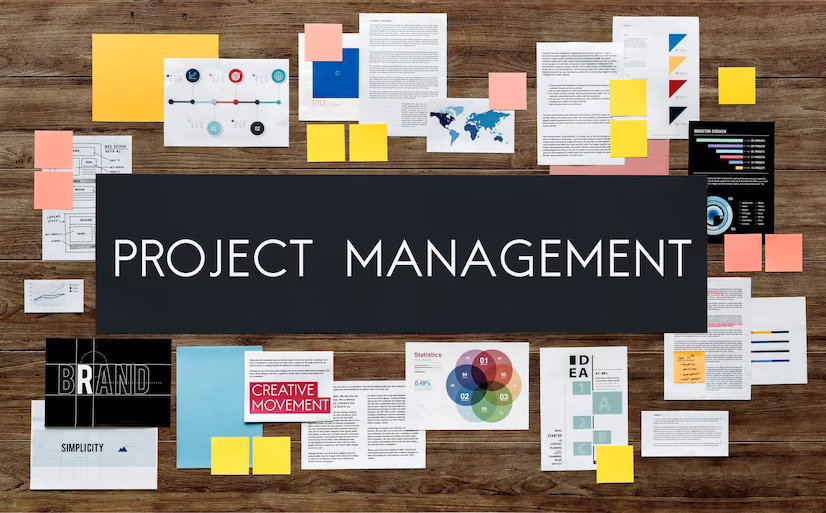You and your team only have so much time. It’s a limited resource, so you need to make the most of what you’ve got. Paradoxically, many teams burn away their precious hours in an attempt to save minutes here and there.
This can happen when teams are trying to create methods of working or task pipelines from scratch. Instead, it’s perfectly reasonable to simply outsource certain work or adopt practices that have already proven their efficacy. With this in mind, here are a few ways your team can stop reinventing the wheel and start moving forward.
1. Outsource Content Development
Every business needs good content to attract prospects and improve the experience of existing customers. And yes, that includes yours. You may think content development is limited to social media posts, but it’s not. To compete in the market, you need to produce content assets like webpages, newsletters, case studies, product descriptions, and much more. However, creating content is a full-time endeavor that can be difficult to master.
Now, you or a team member could devote the time and energy it takes to make great content for your business. Or you could hire someone to do it for you instead. There are numerous professionals in your market that specialize in producing the kind of content you need. Whether you require social media management or technical writing services, a trained pro will save you precious time and money in the long run. Hiring these individuals will give you more time to focus on what you’re in business to do: deliver your product or service.
2. Adopt Project Management Tools
Developing efficient workflows is another major time sink for many teams. Working through the best ways to tackle your projects can eat away the hours. Then more hours disappear in holding meetings and writing emails to assign action items and keep track of deadlines. Rather than watch the sands of time slip through your fingers, adopt a project management tool instead.
Project management tools facilitate seamless collaboration and information sharing. They allow teams to divvy up tasks, automate handoffs, and keep everyone apprised of project milestones. In so doing, they serve as a centralized platform that provides visual representations of your projects for every step from start to finish.
Most project management tools also provide detailed historical data so you can analyze current and past projects for improvement opportunities. You’ll be able to understand at a glance where your work engine is humming and what parts need help.
3. Synchronize on a Digital Calendar
If you’re looking for more ways to increase efficiency by centralizing information, start making full use of a digital calendar. By doing so, your team will be able to circumvent troublesome scheduling conflicts. Also, most digital calendars can sync with other work tools to foster collaboration. For example, calendar invites can include links to meeting agendas where participants can add agenda items and ask — or answer — questions beforehand.
In addition to saving time and increasing efficiency, digital calendars also help otherwise disparate teams function more compatibly. With the sharp increase in remote work, many teams struggle to balance schedules across multiple time zones. Digital calendars virtually eliminate this problem, as you’ll easily be able to see overlapping work hours. You’ll never have to wonder when someone is free to participate, so you can schedule meetings with confidence.
4. Learn From Other Leaders
This one’s for you, the team leader. Because even if your project may be the first of its kind, the best ways to lead your team through it probably aren’t. And they don’t have to be. Rather than trying to revolutionize your leadership style, seek the wisdom of those who have walked before you. History is punctuated by leaders both great and terrible, so take inspiration from its lessons.
In addition, reach out to leadership pioneers within and without your field for advice. You’d be surprised how willing thought leaders can be to participate in an informational interview with curious aspirants. Of course, you could also take classes and attend seminars and workshops to refine your leadership style. You’ll save your team time and grief by investing your efforts in bettering your leadership today.
5. Enable Professional Development
Just as it’s important to invest in your growth, you also need to invest in your team’s growth. Again, no matter what industry you work in, there are many who’ve come this way before you. Rather than developing training courses from scratch, sometimes it’s best to take what works and adapt it to your situation.
Online learning courses are a popular and relatively inexpensive way to enable your team members to gain new capabilities. Whether it’s learning a new programming language, honing their writing skills, or attaining an industry certification, an online course can likely meet the need. Or leverage the learning your senior employees have already done by matching them with a mentee who can benefit from their experience.
It’s Not Rocket Science
Your team doesn’t need to reinvent the wheel to get ahead of the competition. Sometimes standing out from the crowd is about taking better advantage of existing methods and technologies to do the best work. Your team can do this by outsourcing non-core activities, adopting efficient technologies, and prioritizing personal and professional self-development.
Read Also:
























